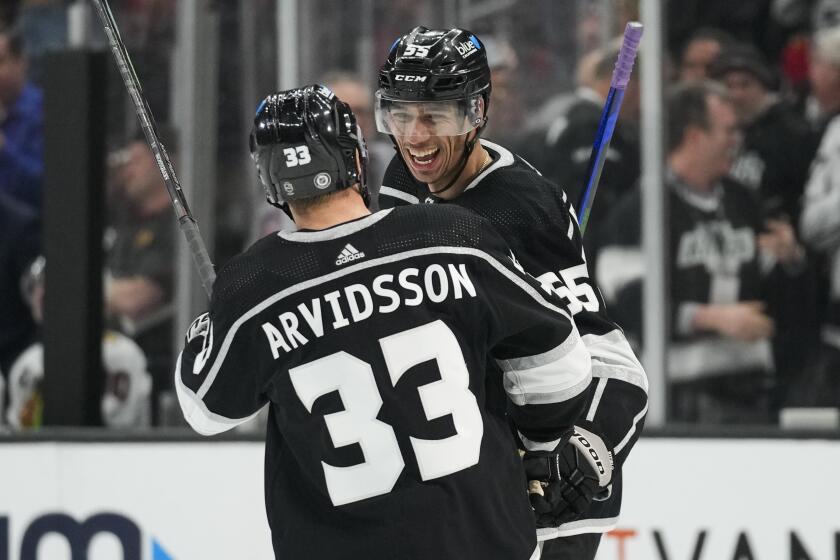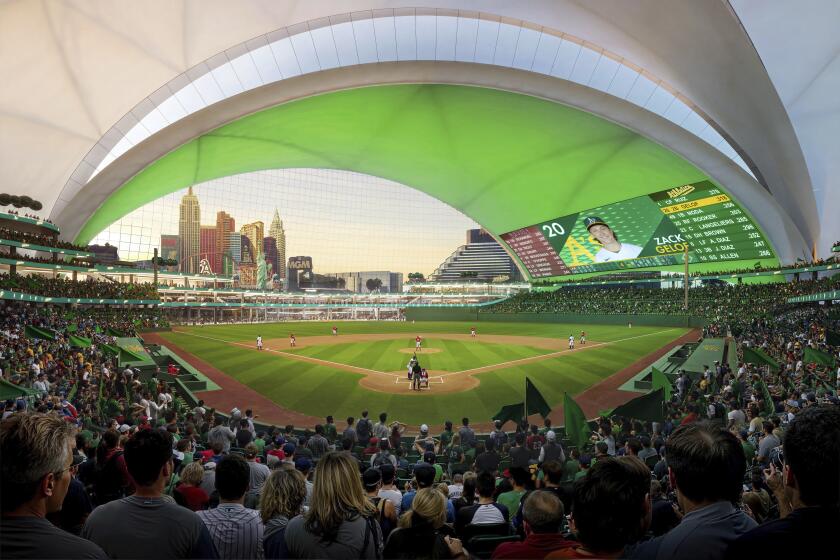Ask Farmer: What are centers saying at the line of scrimmage?
Have a question about the NFL? Ask Times NFL writer Sam Farmer, and he will answer as many as he can online and in the Sunday editions of the newspaper throughout the season. Email questions to: sam.farmer@latimes.com
What are centers saying and doing as they call out, pointing and waving at the defense? Can you give any example?
Norm Zareski
Palos Verdes Estates
Farmer: The center is the traffic cop for the offensive line, letting his fellow offensive linemen know which defender is the middle assignment in a given defensive front (the “Mike”) and thereby letting them know their corresponding blocking assignments. Nick Hardwick, former Pro Bowl center for the Chargers, was one of the best around, so let’s allow him explain:
“Every play has a different assignment,” he said. “I determine who I’m working to, and then it’s like dominoes for the linemen around me, a cascading effect. When you come to the line of scrimmage, everyone should know their assignment. But by me calling it out, it’s just communication so everyone is really clear. And things can change last minute.
“In my head, there was always a little checklist: ‘We have this play, but if we get this front, alert to this.’
“If I see a blitz, maybe there’s another call that I need to make, like, ‘quick down’ or, ‘gap’ or ‘scoop.’
“It would go from me talking to the line, to me talking to [quarterback] Philip Rivers.”
Bottom line, it’s a far more complicated gig than just blocking who’s in front of you.
::
In a game in which the ground is covered with snow, when a ballcarrier is officially ruled down? Is it when his knee touches the snow or when it hits the ground which could be several inches lower and [because of forward progress] farther down the field? What about if the ball skims the top layer of snow but not the ground before being caught, legal catch?
John S. Kelley
Santa Monica
Farmer: Good questions in the wake of last Sunday’s whiteout game in Buffalo between the Bills and the Colts. For the answer, I turned to longtime NFL referee Mike Carey, who explained via text:
“As soon as the snow hits the ground, it becomes part of the ground, and any part of the runner’s body (other than hands or feet) that touches the snow will put him down if he has been contacted. The same holds true for the ball. Any touching of the snow will make a forward pass incomplete prior to a catch.”
That makes sense, because a receiver can’t claim, “Hey, I caught that! You just couldn’t see my hands beneath the snow!”
Twitter: @LATimesfarmer
More to Read
Get our high school sports newsletter
Prep Rally is devoted to the SoCal high school sports experience, bringing you scores, stories and a behind-the-scenes look at what makes prep sports so popular.
You may occasionally receive promotional content from the Los Angeles Times.







